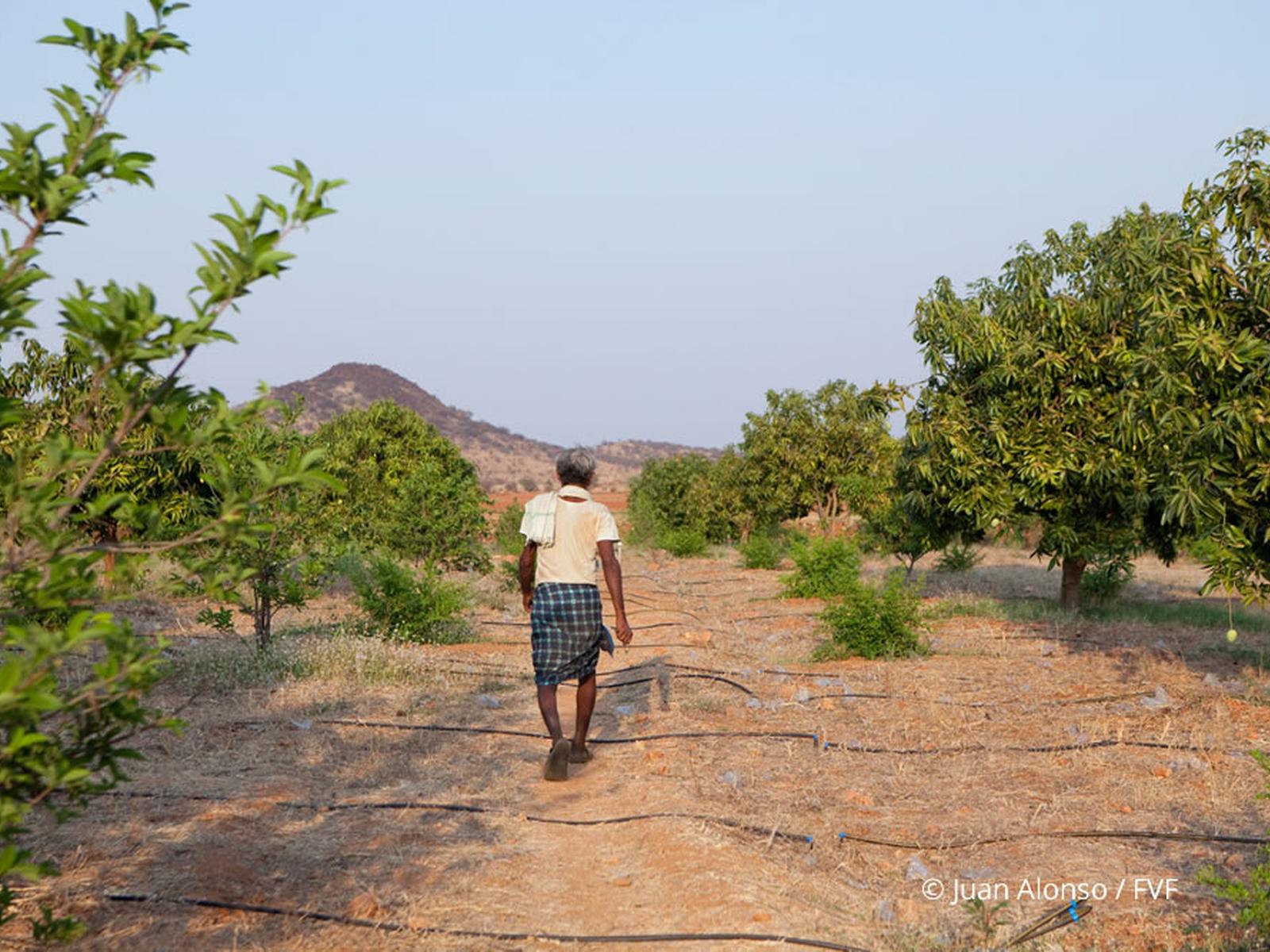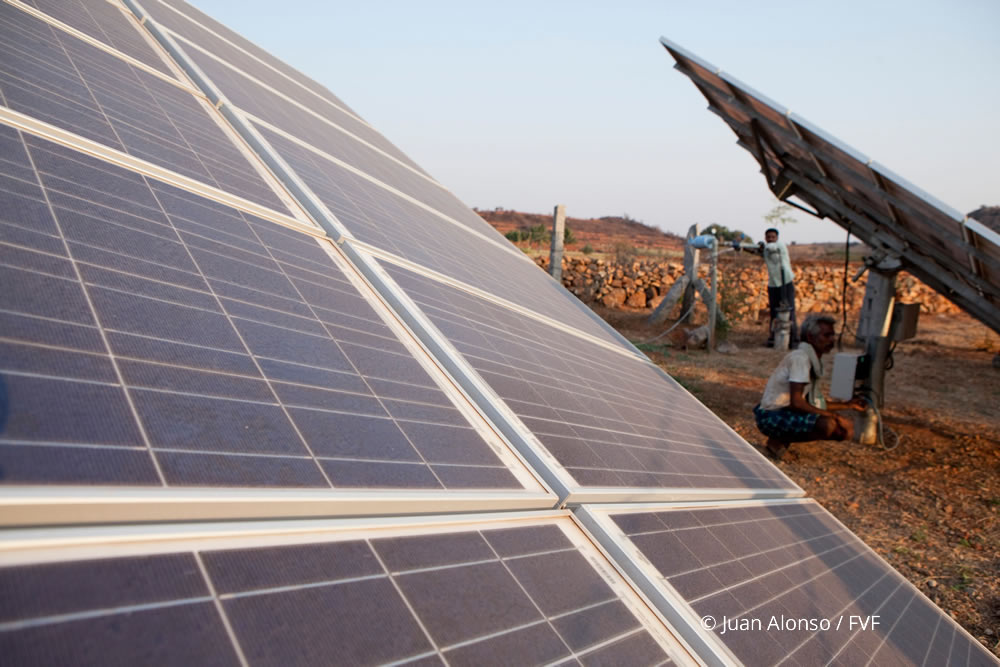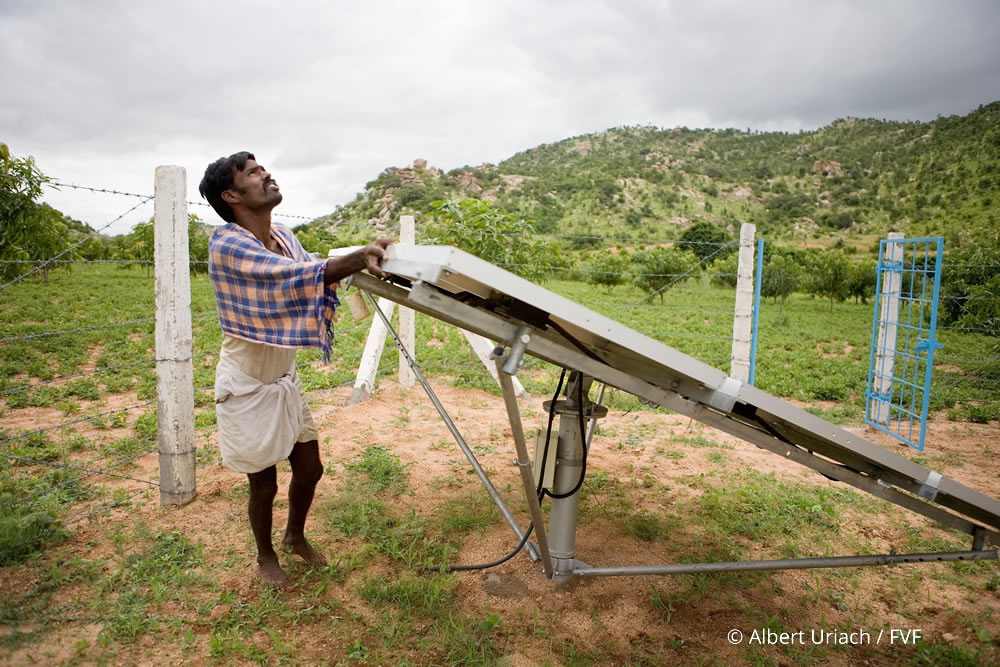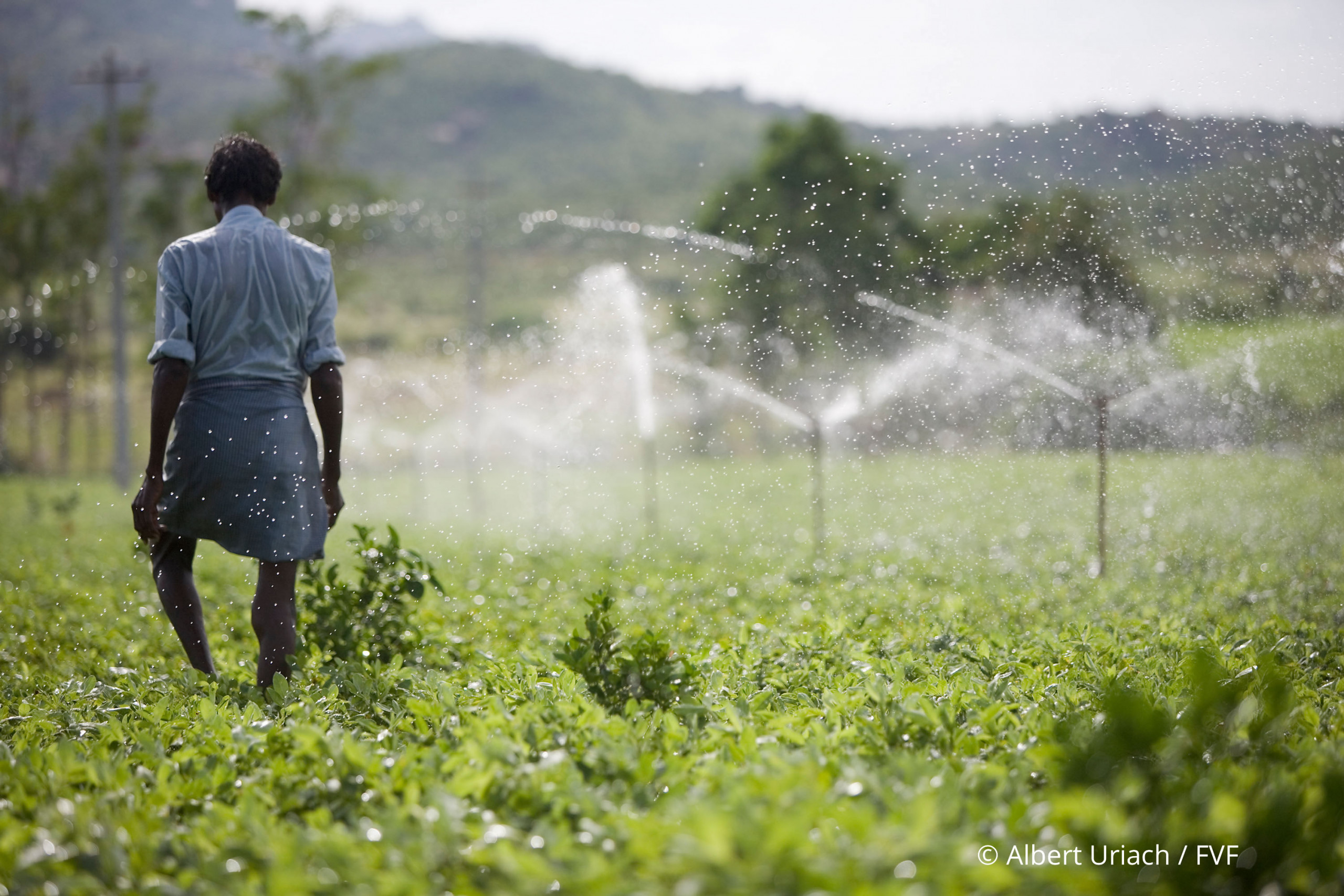India-Utakallu, Mandlipalli and Dugumarri villages, in the Gooty, India, India
In collaboration with

September 2015 – September 2016
We help farmers with few economic resources to increase the productivity of their crops and save water through drip irrigation and energy through solar panels.
Objectives
- Improve agricultural irrigation systems with the installation of solar-powered drip irrigation systems.
- Increase water availability and productivity.
- Empower farmers.
Beneficiaries
350 directos
70 familias de la localidad de los pueblos de Utakallu, Mandlipalli y Dugumarri

On the ground
There is a high migration rate to cities due to low crop productivity and the high cost of irrigation facilities.
Most of the population of a large part of the Andhra Pradesh state only has agriculture as a means of subsistence. This is a rather problematic circumstance, as the scarce and irregular rainfall, along with the lack of water management infrastructures, leads owners to abandon the idea of farming their land due to the high cost and the limited prospect of success. Therefore, in view of the lack of work, the poorer inhabitants of the district are compelled to migrate to the large cities, where very precarious conditions in shacks await them, heading towards poverty and sickness.
In detail
Drip irrigation consists in the strong>drop by drop irrigatio of plants close to the root. Water is supplied by means of closed central pipes and lateral pipes. This method reduces the waste of water, something the inhabitants of Andrha Pradesh cannot afford.
The water pumping systems may be diverse, but it has been established that solar energy presents different advantages that make it the most suitable method for this area in rural India. For this reason, the project includes the installation of photovoltaic facilities that make the most of solar energy to drive the pumps that draw water from the subsoil and allow the activation of the drip systems.
India is located in the so-called sun belt of the Earth, with Anantapur being of the districts that receives more solar energy. In view of this, the Vicente Ferrer Foundation is introducing in the villages it works in these photovoltaic solar energy systems that replace the existing ones that were driven by fossil fuels.
What are the advantages of solar energy generators?
- Once the traditional diesel pumps are replaced by solar energy generators in all new drip and spray irrigation systems, CO2 emissions and the dependence on fossil fuels are eliminated.
- Thanks to the creation of these infrastructures, the availability of water for irrigation is ensured and within the reach of small owners of arable land.
- Production costs are reduced, thus increasing the profitability of agricultural production and the diversification of crops.
What will we do?
We will install new solar-powered irrigation systems, drip irrigation systems and five photovoltaic panels in the Gooty, Nallacheruvu and Narpal areas, in the B.K. Samudram and Kadiri regions, in particular in the Utakallu, Mandlipalli and Dugumarri villages.
With the solar-powered drip irrigation system we will be able to cover an extension of 16.65 hectares of land, owned by 14 small farmers with a low socio-economic profile.





